Scientific Results
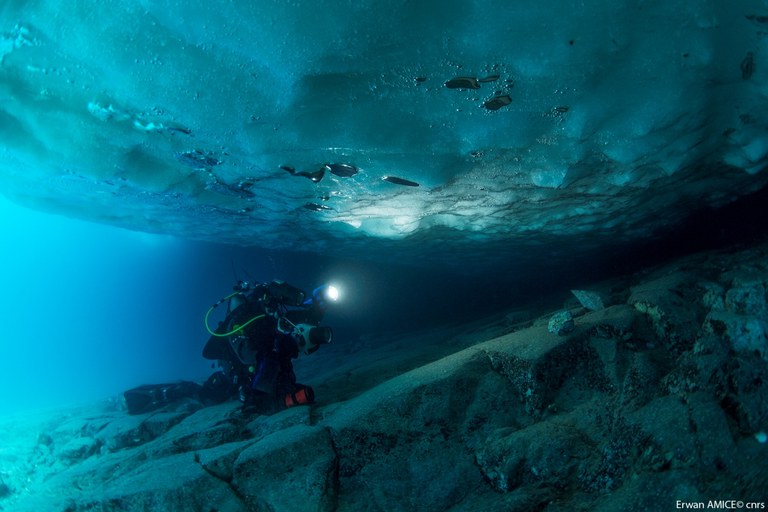
Environmental knowledge
The different sites studied during the B.B.Polar project were: the Baffin Bay (NOW), the Beaufort sea, two fjords in Greenland (Kobbefjord and Yung Sund), and two fjords in Svalbard (Kongsfjorden and Rijpfjorden). The project was an opportunity to consolidate the existing environmental data for each site and complement during the eight missions conducted.

Study of polar shells
The use of biological archives may constitute an interesting approach for assessing the evolution of Arctic ecosystems over long time periods. In this investigation, we used Chlamys islandica which has a life time of a couple of decades, and the bathyal Arctic bivalve Astarte moerchi, a long-lived, sessile species that often dominates Arctic benthic communities as tracers of environmental changes.
Validation of growth patterns
To validate the growth rate of Chlamys islandica, two techniques were used: calcein marking and oxygen stable isotopes (d18O) of the shell. These two techniques enable us to say that one pigmented + one non-pigmented bands correspond to one year of growth so we can use alternation of pigmented / non pigmented areas to estimate age of the individuals. The non-pigmented bands are formed between January and March. Chlamys islandica seems to stop growing when the temperature of the water is below 0°C.
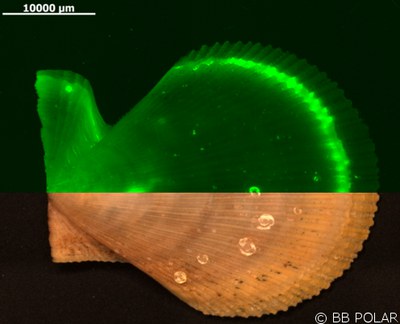
Chlamys islandica shell under reflected light and UV. The green line represents the date of the calcein tagging.
For Astarte moerchi, radiocarbon analyses were used to establish whether or not the growth increments observed in shells of A. moerchi from northern Baffin Bay are annual.
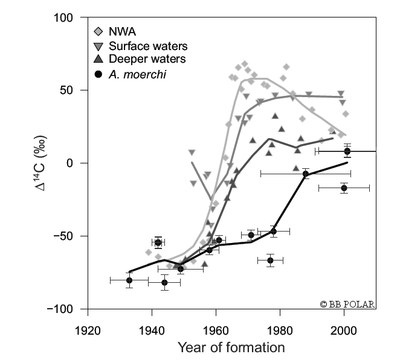 |
Bomb radiocarbon chronologies for Astarte moerchi. Horizontal bars are estimated sampled period for Δ14C analysis. Fitted lines are locally weighted least square (LOESS) regressions. Reference chronologies are from Campana et al. (2008): marine Northwest Atlantic (NWA) reference chronology, Arctic marine surface waters (0-100m), and Arctic marine deep waters (300 m on average). |
|---|
We observed delayed and reduced amplitude of Δ14C values compared to reference chronologies. To our knowledge, only primary production dynamics exhibiting an annual rhythmicity resulting in a strong seasonal variation of food availability in Arctic systems may lead A. moerchi to produce clearly separated growth increments. Hence, radiocarbon analysis confirmed that the formation of growth lines in shells of A. moerchi was annual.
Growth rate of Chlamys islandica
Growth curves has been realised for the different study sites and show very different growth patterns depending on the location but also according to the depth to which the shells have been removed.
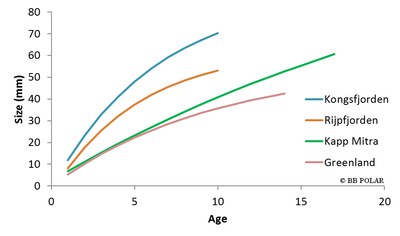
Von Bertalanffy models estimated from the growth curves of Chlamys islandica caught on four different study sites.
Growth of Astarte moerchi
Fifty-one specimens of A. moerchi were collected at 568 m in the North Water polynya (76°11’ N; 73°12’ W) on 16 October 2010. The shells were sectioned and the growth lines were read on thin sections. A Standardized Growth Index (SGI) time-series was generated, extending back to the 1950s and reflecting environmentally-induced shell growth variations.
 Dorso-ventral cut of an Astarte moerchi shell and position of the carbonate samples. The picture under the shell shows clear annual bands.
Dorso-ventral cut of an Astarte moerchi shell and position of the carbonate samples. The picture under the shell shows clear annual bands.
SGI significantly increased during the last decade, but no correlation was found either with the North Atlantic Oscillation (NAO) or the Arctic Oscillation (AO) climate indices.
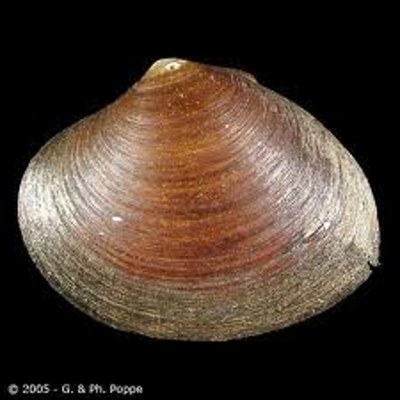 | 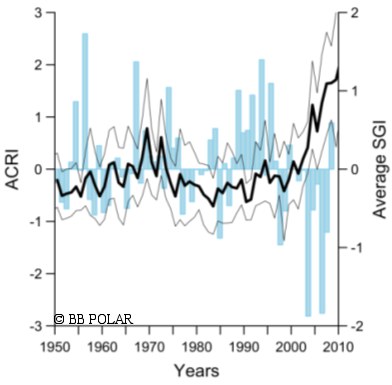 |
|---|
Astarte (left) and Standardized Growth Index of Astarte sampled
Study of tissues and metabolism
We characterized and then compare the diet of bivalve in several subarctic fjords. Diet characterisation of Astarte spp. has been performed in Kongsfjorden, Kobbefjord and Yung sund using fatty acid trophic markers (FATM), bulk isotopes (d13C and d15N) and compound specific stable C isotope of FA (d13CFA). Digestive gland and muscle have been analysed together with the different potential food sources (particular organic matter, ice algae, organic matter at the surface of the sediment and macroalgae).
The diet characterisation of Chlamys islandica has been performed only in Kongsfjorden. The diatom contribution to the diet is bigger in May than in September. In September, the diet is also composed of dinoflagellates and macroalgae.
Metabolism of Chlamys islandica has been studied in Kongsfjorden looking at respiration rate, filtration rate and behaviour in May and September 2013. Respiration rate does not seem to be different between spring and autumn. However, a big inter-individual variability is observed in term of respiration and filtration rate. A positive relationship was observed between the valve gape (space between the two valves measured by in situ accelerometry) and the clearance rate.
For more information: see the final project report and related publications will be updated regularly.
